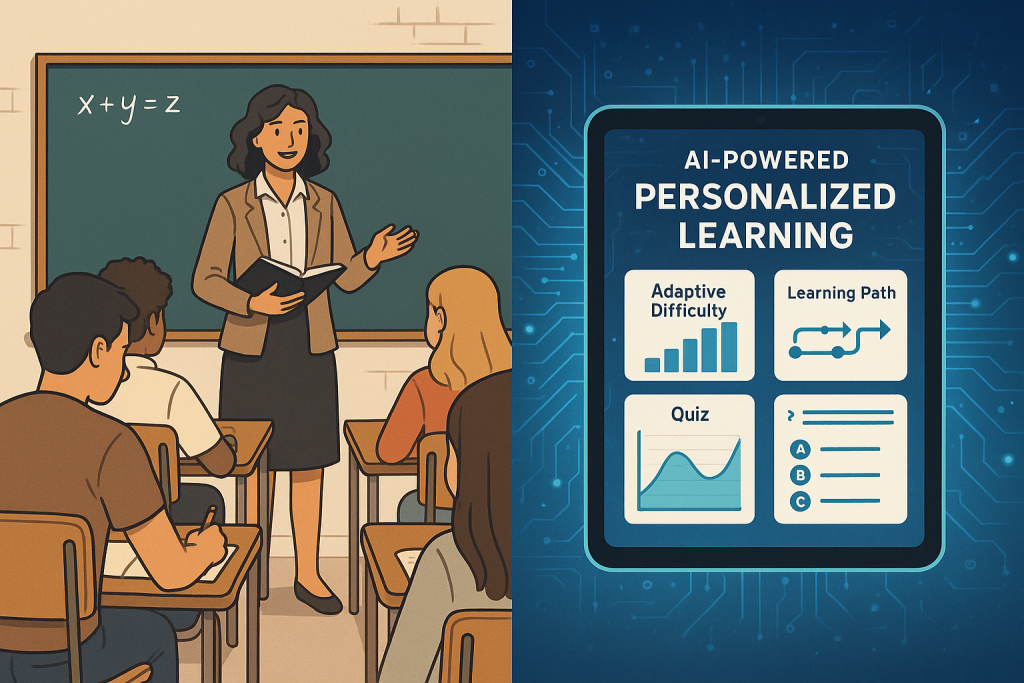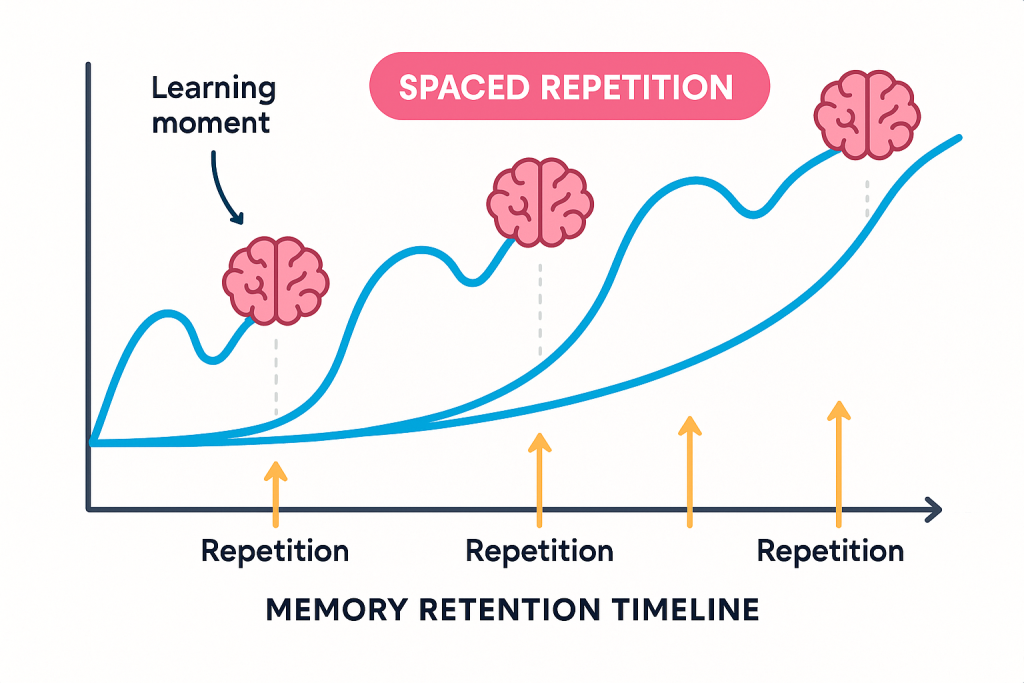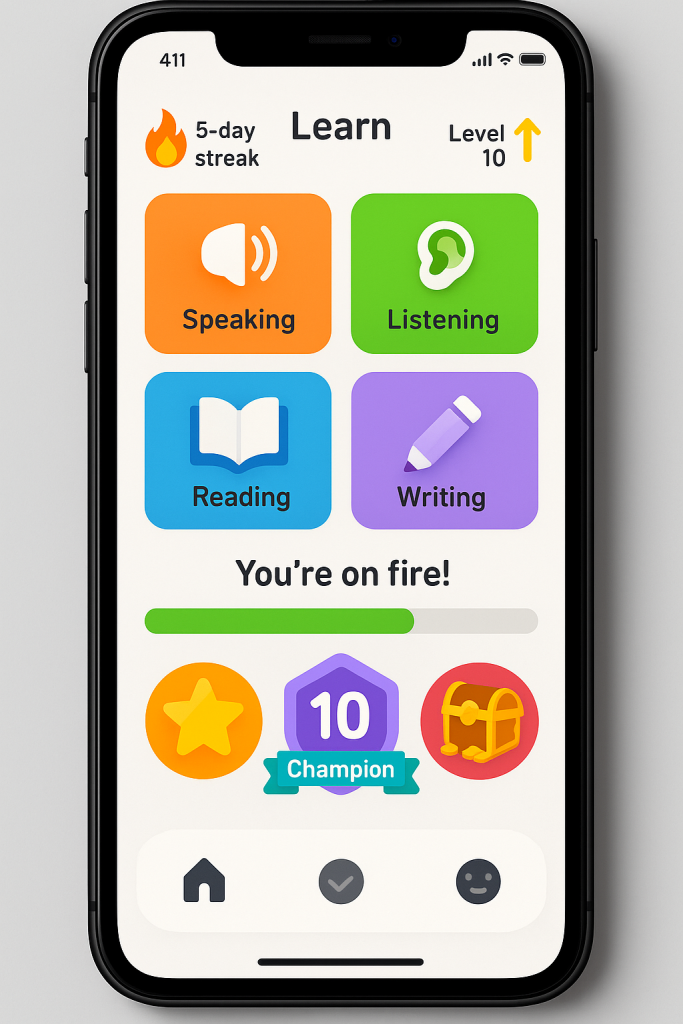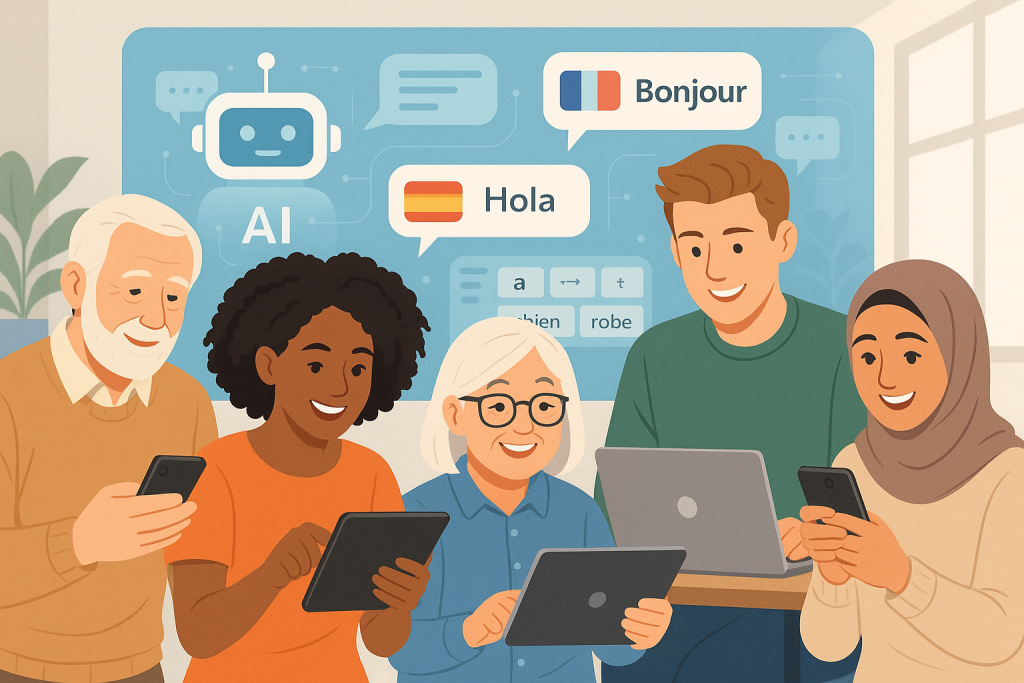A deep dive into how a little green owl revolutionized language learning and became one of AI’s biggest success stories
The Great Language Learning Struggle (We’ve All Been There)
Picture this: You’re sitting in a cramped classroom, conjugating French verbs while your teacher drones on about past participles. Half the class is lost, the other half is bored out of their minds, and you’re somewhere in the middle wondering why “I am” becomes “Je suis” but “I have” becomes “J’ai.” Sound familiar?

Or maybe you’re the overachiever who bought every language learning book, downloaded seventeen different apps, and promised yourself you’d finally become fluent in Spanish. Three weeks later, those dusty books are holding up your wobbly coffee table, and your phone notifications from language apps have joined the growing list of digital guilt trips you cheerfully ignore.
Here’s the thing about traditional language learning: it’s like trying to fit everyone into the same pair of jeans. Some people need a 32 waist, others need a 38, and some need the stretchy kind with the “comfort fit” label that makes you feel better about your life choices. But traditional education? One size fits all, baby!
That’s exactly the problem Duolingo set out to solve. And boy, did they solve it in style.
Enter the Green Owl: Duolingo’s AI Revolution
Let’s be real for a moment. When Duolingo launched in 2011, it wasn’t some AI powerhouse. It was just Luis von Ahn and Severin Hacker trying to make language learning free and accessible. The AI magic came later, but when it did, it transformed everything.
Fast-forward to today, and Duolingo has become the poster child for AI in education – and for good reason. While other companies are struggling with that whole “nobody wants to pay for your AI” problem (yes, I’m looking at you, random chatbot that got stuffed into my email app), Duolingo figured out the secret sauce: make AI so invisible and helpful that people don’t even realize they’re experiencing cutting-edge technology.
Think about it. When you open Duolingo, you don’t see a flashy “POWERED BY AI!” banner. You don’t get a robotic voice explaining how machine learning algorithms are optimizing your experience. Instead, you get Duo (that adorable, slightly passive-aggressive owl) who somehow knows exactly what you need to learn next.
The AI Behind the Curtain: What Makes Duolingo Tick
1. The Spaced Repetition Revolution

Remember cramming for exams? You’d stuff your brain with information the night before, ace the test, and then completely forget everything two weeks later. Duolingo’s AI said “not on my watch” and implemented something called spaced repetition.
Here’s how it works: Instead of just randomly throwing vocabulary at you, Duolingo’s AI tracks everything. And I mean everything. It knows that you nailed “casa” (house) the first five times but keep confusing “pollo” (chicken) with “polo” (polo). So guess what? You’ll see “pollo” again in a few hours, then tomorrow, then next week, perfectly timed to hit your brain right when you’re about to forget it.
The AI doesn’t just schedule reviews randomly. It uses something called the “forgetting curve” – a psychological principle that shows how our memory decays over time. The algorithm calculates the optimal moment to reintroduce a concept, right before your brain would naturally let it slip away.
It’s like having a personal tutor who has been studying your brain for months and knows exactly when to say, “Hey, remember that thing about irregular verbs? Let’s practice that again.”
2. Adaptive Difficulty: The Goldilocks Zone
You know that frustrating feeling when a lesson is either mind-numbingly easy or impossibly hard? Duolingo’s AI has practically eliminated that problem by creating what researchers call the “zone of proximal development” – fancy words for “not too easy, not too hard, but just right.”
The system continuously analyzes your performance patterns. Are you blazing through Spanish adjectives? The AI might introduce more complex grammar structures. Struggling with Japanese kanji? It’ll slow down, provide more context, and give you extra practice with similar characters.
But here’s where it gets really clever: the AI doesn’t just look at right and wrong answers. It analyzes how long you take to respond, whether you used hints, if you made typos, and even patterns in your mistakes. Did you confuse “ser” and “estar” (both mean “to be” in Spanish) for the third time this week? The AI will create targeted exercises to help you understand the difference.
3. The Motivation Engine: Gamification Meets Psychology

Let’s talk about streaks. Oh, those beautiful, addictive streaks. Duolingo didn’t just gamify language learning; they turned it into a psychological masterpiece. The AI tracks your usage patterns and sends notifications at precisely the right moment to keep you engaged.
Completed your lesson at 7 PM for five days straight? Expect a gentle reminder around that time. Tend to skip weekends? Friday’s lesson might include a “weekend warrior” challenge to keep you going.
The AI also personalizes achievements and celebrations. Some users respond to competitive elements (leaderboards, streak competitions), while others are motivated by progress tracking (XP points, level completions). The system learns what motivates you specifically and adjusts the experience accordingly.
And don’t get me started on those guilt-trip notifications. “These reminders don’t seem to be working. We’ll stop sending them for now.” Genius! Reverse psychology powered by AI.
4. Error Pattern Recognition: Learning from Your Mistakes
Here’s where Duolingo’s AI really shines. Traditional textbooks treat all mistakes equally, but Duolingo’s system recognizes that not all errors are created equal.
Let’s say you’re learning German (bless your brave soul). If you consistently mix up “der,” “die,” and “das” (German’s three ways of saying “the”), the AI recognizes this as a systematic pattern, not random mistakes. It will then create targeted exercises focusing specifically on article usage, perhaps showing you words in context or using visual cues to help you remember.
The system also distinguishes between different types of errors:
- Typos: You know the answer but your fingers betrayed you
- Conceptual mistakes: You don’t understand the underlying grammar rule
- Memory lapses: You learned it before but forgot
- Interference errors: Your native language is getting in the way
Each type gets a different treatment strategy, making your learning experience incredibly efficient.
The Science Behind the Magic
Duolingo doesn’t just throw AI at problems and hope for the best. They’ve got a team of linguists, data scientists, and learning researchers who are constantly running experiments. We’re talking millions of A/B tests to figure out everything from the optimal lesson length to the best way to introduce new concepts.
One of their most fascinating discoveries? The “birdbrain” phenomenon. They found that shorter, more frequent lessons (like 5-10 minutes daily) are significantly more effective than longer, less frequent sessions. The AI now optimizes lesson structure to match this finding, breaking complex topics into bite-sized chunks that fit perfectly into your coffee break.
They’ve also discovered cultural learning patterns. The AI noticed that learners from different countries have different strengths and weaknesses. For example, speakers of tonal languages like Mandarin tend to pick up Spanish pronunciation faster, while English speakers often struggle with gendered nouns. The system now accounts for these patterns, providing targeted support based on your linguistic background.
Real Impact: When AI Actually Works
Here’s where things get really exciting. Duolingo’s AI isn’t just clever – it’s effective. Independent research has shown that 34 hours of Duolingo is equivalent to one semester of university-level language instruction. That’s not marketing fluff; that’s peer-reviewed research.
But the real magic is in the personal stories. Take Maria, a 45-year-old nurse from Texas who used Duolingo to learn Spanish so she could better communicate with her patients. The AI quickly identified that she was motivated by practical, real-world scenarios, so it prioritized medical vocabulary and conversational phrases over literary expressions.
Or consider James, a 22-year-old college student learning Japanese before studying abroad. The system recognized his goal timeline and academic background, adjusting the curriculum to focus on essential daily conversation skills and cultural context rather than business terminology.
These aren’t random success stories – they’re the result of AI that actually understands individual learning patterns and adapts accordingly.
The Economics of Educational AI: Why This Actually Works
Remember those documents about AI monetization challenges? Most AI companies are struggling because they can’t prove their value. Duolingo cracked this code by focusing on outcomes, not features.
They don’t sell you “AI-powered language learning.” They sell you the ability to speak Spanish with your grandmother, to navigate Tokyo without pointing and hoping, or to finally understand what your favorite K-pop songs actually mean.
The freemium model works because the AI provides genuine value in the free tier while creating natural upgrade paths. Need to practice offline for your upcoming trip? Premium. Want to fix your mistakes immediately instead of waiting? Premium. The AI helps identify when users would benefit most from premium features and suggests them at precisely the right moment.
This approach has led to impressive numbers: over 500 million registered users and millions of active subscribers who happily pay because they can see the results.
Beyond Language Learning: Lessons for Education

Duolingo’s success offers a blueprint for AI in education that other platforms would be wise to follow:
1. Invisible Intelligence
The best educational AI doesn’t announce itself. Students shouldn’t think “I’m using AI” – they should think “This understands me.”
2. Personalization at Scale
Mass customization isn’t an oxymoron when done right. AI can provide individualized experiences for millions of learners simultaneously.
3. Behavioral Science Integration
Technology alone isn’t enough. Successful educational AI combines cutting-edge algorithms with deep understanding of human psychology and learning theory.
4. Continuous Optimization
Duolingo runs thousands of experiments constantly. Educational AI should be constantly evolving based on real user data, not designer assumptions.
The Future of AI in Education
Duolingo’s success is just the beginning. We’re seeing the emergence of truly adaptive learning systems that could revolutionize education across all subjects. Imagine:
- Math platforms that recognize you’re a visual learner and automatically present geometry concepts through interactive diagrams rather than text
- History courses that adapt to your interests, diving deeper into topics that fascinate you while ensuring you still cover essential material
- Science labs that adjust complexity based on your background knowledge and learning pace
But here’s the crucial insight: the future of educational AI isn’t about replacing teachers – it’s about amplifying human potential. The best AI tutors will work alongside human educators, handling personalized practice and review while freeing teachers to focus on creativity, critical thinking, and emotional support.
The Challenges Ahead
Of course, it’s not all smooth sailing. Educational AI faces significant challenges:
Privacy concerns: With AI systems collecting detailed learning data, protecting student privacy becomes paramount. Duolingo has been relatively transparent about data usage, but the broader industry needs clear standards.
Equity issues: AI-powered education could exacerbate existing inequalities if access remains limited to those who can afford premium services or reliable internet.
Over-reliance risks: There’s a danger that learners might become too dependent on AI scaffolding, struggling when they need to apply knowledge independently.
Cultural bias: AI systems can perpetuate biases present in training data, potentially disadvantaging learners from underrepresented backgrounds.
What Content Creators Can Learn
For those of us creating educational content, Duolingo’s AI strategy offers valuable lessons:
Focus on outcomes, not technology: Don’t lead with “AI-powered content.” Lead with the results your audience will achieve.
Personalization beats perfection: It’s better to have adaptive, responsive content that meets learners where they are than perfectly polished one-size-fits-all materials.
Data-driven iteration: Use analytics to understand how your audience engages with content, then optimize accordingly.
Behavioral design matters: Understanding psychology is as important as understanding your subject matter.
The Bottom Line
Duolingo’s AI success story isn’t just about technology – it’s about understanding what makes learning work. They took centuries of educational research, combined it with cutting-edge AI, and wrapped it all in an experience so engaging that millions of people choose to spend their free time conjugating verbs.
The result? One of the few AI applications that people genuinely love paying for, because it delivers on its promises in ways that are immediately obvious and personally meaningful.
As we look to the future of education, Duolingo has shown us what’s possible when AI is designed with learners, not algorithms, at the center. It’s not about creating the smartest AI – it’s about creating the most helpful one.
And honestly? In a world full of AI that nobody wants to pay for, that little green owl might just be the wisest teacher of all.
What’s your experience with AI in education? Have you tried Duolingo or other AI-powered learning platforms? Share your thoughts and let’s continue this conversation about the future of personalized learning.
